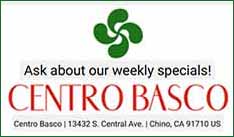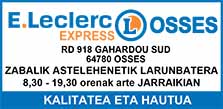Mark McLaughlin. Sheep provide meat proteins, milk, wool and fine leather. During the spring green-up, livestock fattened on fenced-in grassland, but when June heat desiccated lowland forage sheep were moved to high-elevation meadows.
Environmental activist John Muir wrote about the deleterious effect of sheep in his book, “My First Summer in the Sierra.” Muir describes how he hired on as a shepherd in 1869 to take a flock of 2,000 sheep into the Tuolumne Meadows in Yosemite’s high country. But when he observed the voracious animals tearing up native grasses, consuming wildflowers and other vegetation, he realized how damaging the flocks were to the Sierran natural habitat. Muir famously railed against letting thousands of sheep graze his beloved mountains, denigrating the ruminant mammals as “hoofed locusts.”
Tending the flocks
Unlike cattle with imposing physical mass and herd protection instincts, sheep are skittish timid creatures that graze in flocks with no natural protection from predators such as wolves and coyotes. To safeguard vulnerable ewes and lambs, itinerant Basque sheepherders, along with their work dogs, spent long, lonely summers in remote alpine environments. Early newspaper accounts mention mental health impacts such as insanity or suicide while maintaining their constant vigil over hundreds or thousands of restless animals.
Camp tenders cooked and packed in food and supplies to the isolated herders using horses or mules, with each camp tender supporting up to eight herders at a time. By 1900 an estimated 100,000 sheep were grazing in the multi-use Tahoe National Forest, with a nontrivial percentage owned by smalltime operations with no land use or foraging permits. Conflicts over rights between cattle ranchers and the sheep industry in the West escalated, which prompted Forest Service rangers to limit sheep counts due to overgrazing and its detrimental ecological impact on range health.
The Taylor Grazing Act of 1934 put most rogue sheepmen out of business. Today roughly 6,000 head of sheep are permitted to graze each summer on public and private lands within the bounds of Tahoe National Forest.
Read more about local Basque culture at TheTahoeWeekly.com/Basque
Drought in the 1930s reduced western sheep production and jobs, but with a pressing need for more meat in the United States during and after World War II, the federal government encouraged American companies to again recruit skilled Basque sheepmen.
Remnants of Basque culture
Today, evidence of Basque culture can be found in tree-bark carvings and outdoor Basque-style bread and meat stew ovens with their classic domed beehive shape that were a key part of camp life. Fresh bread and red wine were coveted by the solitary, homesick herders.
Basque arborglyphs (tree carvings) attributed to late 19th Century herders can be found on aspen tree trunks in high-elevation forests of California, Nevada and Idaho. Individual trees within these groves reveal names, dates, places of origin, hometowns and provinces, as well as contemporaneous messages to other Basque herders. They are unique cultural artifacts, but trees die and the original carvings skillfully engraved in the whitish-gray bark will eventually cease to exist except in photographs or replicated in other art mediums.
Scholars note that hand-built Basque ovens and arborglyphs indicate the newly arrived migrants viewed their presence in the American West through a prism of traditional values learned in the old country. Iñaki Arrieta Baro, head librarian of Jon Bilbao Basque Library at the University of Nevada, Reno (UNR), studies Basque carvings and explains, “They are symbols of [the herders] solitude during the time spent at the mountain pastures, but also of their willingness to remember their homeland and preserve their identity.”
Baro adds that UNR’s Basque Library — which houses one of the world’s largest collections of Basque-related materials — recently acquired the Earl Collection, which “…showcases tree carvings and illustrates how they are beautiful examples of human artistic creativity, even in the most humble of material circumstances.”
Basque sheep camps remain
Abandoned Basque sheep camps still exist locally. The Wheeler Sheep Company camp at Kyburz Flat Interpretive Area features a reconstructed Basque oven built in 1992 by UNR Professor Jose Mallea, PhD. and volunteers from the Basque Studies Program. The area is located north of Truckee and is open to the public. With permission the oven can be used by groups during summer months.
There is a Basque sheep camp in Russell Valley, but construction of Stampede Reservoir boosted the water table leading to rot in remaining structures. A Basque oven there was built in 1946 or 1947. The Whiskey Creek sheep camp, situated within the Granite Chief Wilderness near Five Lakes, is listed on the National Register of Historic Places. The dilapidated dome oven consists of rough, mortared granite blocks instead of the more common cemented brick. There is another located in Page Meadows on the West Shore of Lake Tahoe.
Basque ties to ski history
Most Basque sheepherders lived quiet, unassuming lives, but not all. The Arrougé family were Basque herders at Lake Tahoe who spent summers at what is now Olympic Valley, grazing sheep in the upper meadows of today’s Palisades Tahoe. In the early 1930s, Marti Arrougé met Wayne Poulsen, a true ski visionary, and the two teenagers hatched a farfetched plan to convert the mountains surrounding the idyllic valley into a first-class ski hill.
In 1949 their dream came true with the opening of Sq**w Valley (now Palisades Tahoe), but Poulsen was forced out of the corporation under pressure from shareholders. Arrougé married wealthy actress Norma Shearer in 1942. The couple were major investors in the company and lifetime downhillers.
Pascal “Pete” Huega was a French-speaking Basque sheepherder who moved to Tahoe after World War II. When Sq**w Valley opened in 1949, Huega took a job as a lift operator. In 1964, his son Jimmie Huega won the Olympic bronze medal in slalom at Innsbruck, Austria.
Kyburz Flat Interpretive Area (reconstructed) | north of Truckee
Whiskey Creek Sheep Camp | Granite Chief Wilderness
Mark McLaughlin
http://thestormking.com
Mark is an award-winning, nationally published author, historian and professional speaker with seven books and more than 800 articles in print. A prolific writer, Mark has received the Nevada State Press award five times. He is a popular lecturer and experienced field trip leader who has lived at North Lake Tahoe since 1978. He teaches Sierra Nevada history using entertaining stories, slide shows and informative tours. He has been a frequent guest on National Public Radio and has appeared as an expert consultant on CNN, The History Channel and The Weather Channel, as well as many historical documentaries.



 Send to a friend
Send to a friend Add comment
Add comment








